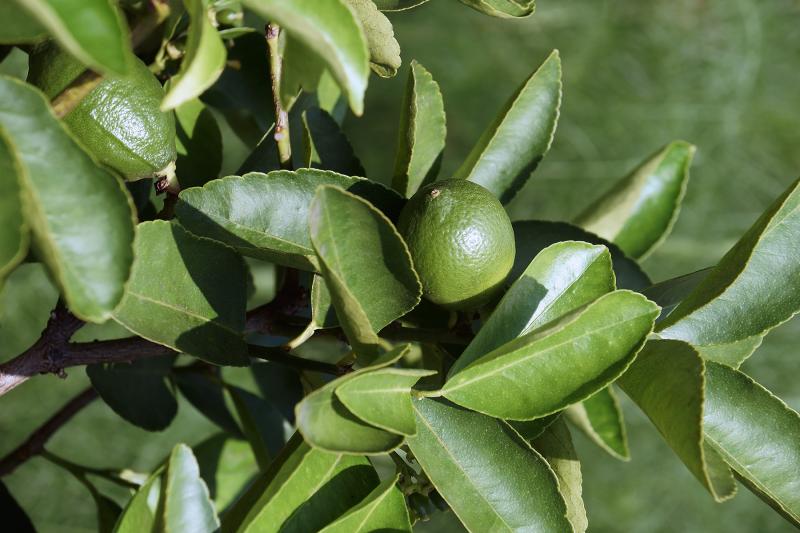Some people are born to become doctors or lawyers, or at least their names seem to tell what they do. This is called “Nominative determinism,” the idea that people are attracted to jobs that match up with their names. Take the New York lawyer, Sue Yoo. Or that Britain's Water Research Centre spokesman is Andrew Drinkwater. And who better for BBC's weather presenter than Sara Blizzard?
Gardeners want trees that bear fruit, so who better to introduce a new variety of Tahiti lime than Mr. T.J. Bearss, who found the lime in 1895 in a grove in Porterville, Calif.? Now you can grow your own Bearss Lime tree indoors.
These are seedless, or nearly seedless, limes with almost thornless branches. The attractive trees have dense, deep-green leaves and fragrant white blossoms. The smooth, thin rind of the fruit changes from dark green to light yellow when it ripens. The flesh is sweet, tender, and juicy.
Bearss Lime does well in the cooler conditions of most homes because it does not need much heat to ripen its fruit. Fruits are about the size of a small lemon.
Bearss Seedless Lime (Citrus × latifolia) blooms from late winter through early spring at the ends of its branches with showy clusters of white, star-shaped flowers, each with yellow eyes. Like all citrus, this is an evergreen tree whose glossy leaves are attractive year-round. Keep the leaves clean by washing them with plain water every few weeks.
Citrus trees grow best indoors at 65° during the day and about five to ten degrees cooler at night. Trees are available from specialty nurseries such as Burpee (burpee.com).
Plant them in soil with lots of organic matter such as compost. Because citrus trees prefer acid conditions, mix some peat moss in the potting mix to keep the soil pH low. Use a blend of one-third sterile potting soil, one-third perlite or vermiculite, and one-third peat moss. Use a fertilizer made especially for acid-loving plants mixed at half strength. Fertilize your lime tree only when it is actively growing, early spring through late August or September.
If your trees bloom yet fruit doesn't form, it may be due to lack of pollination. Outdoors, insects pollinate citrus and because these are not usually present in your house, shake the blossoms gently or use a clean artist's brush to spread pollen from flower to flower. Common pests that attack citrus trees include whitefly, scale, and spider mites.
Stem cuttings will root easily. Choose new-growth shoots that are slightly hardened but not woody. Avoid using cuttings that are still bendable and soft. Take cuttings while the tree is actively growing, in the spring or summer. Apply rooting hormone to the cuttings and pot them in individual pots. Keep the cutting slightly moist, but not soggy.
Although growing citrus from seeds is a good kids’ garden project, plants grown from seeds may not bear fruit for years, if ever. Limes from the store are often picked before they are ripe, so they have less juice. Let your limes fully mature on the tree for the best taste.
When potted and brought outdoors during warm weather, the Bearss Lime tree will attract hummingbirds, bees and butterflies to your patio, balcony or yard.
So even if you aren't a logger named Todd Cutright, or a hand surgeon called David J. Mitten, you can plant a Bearss Lime in a pot and thank Mr. Bearss for his tree that bears this tasty fruit.





















































